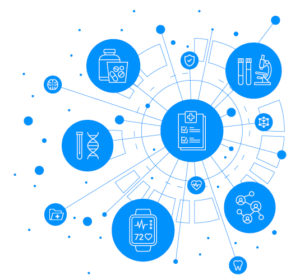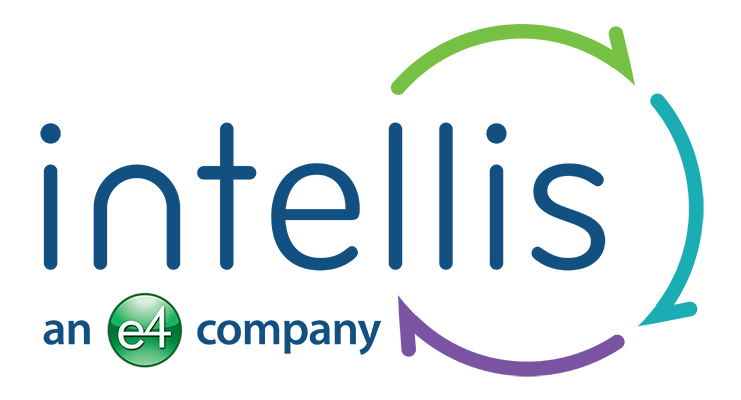 New codes related to respiratory acidosis are now in place.
New codes related to respiratory acidosis are now in place.
Acute respiratory acidosis is now indexed to J96.02 (Acute respiratory failure with hypercapnia).
Chronic respiratory acidosis is now indexed to J96.12 (Chronic respiratory failure with hypercapnia).
Respiratory acidosis unspecified remains indexed to E87.29 (Other acidosis).
Definitions
Acute respiratory acidosis occurs when carbon dioxide builds up very quickly before the kidneys can return the body to a state of balance.
Chronic respiratory acidosis occurs over a long time. This leads to a stable situation because the kidneys increase body chemicals, such as bicarbonate, that help restore the body’s acid-base balance.
Respiratory acidosis is a condition that occurs when your lungs can’t remove all of the carbon dioxide produced by your body. This causes the blood and other body fluids to become too acidic.
Gold Star Ranking at RWJBarnabas Encompasses MPI and Data Integrity Work with Intellis
 In October 2022, Intellis’ New Jersey-based client RWJBarnabas received an unprecedented perfect score from Epic for its EHR implementation project, as Becker’s Hospital Review reported. The Gold Star 10 ranking, the highest level of recognition a health system can achieve from Epic, places the organization in an elite class of health systems. An essential piece of RWJBarnabas Health’s Epic success was a keen focus on data integrity and master patient index (MPI) cleanup throughout the implementation process.
In October 2022, Intellis’ New Jersey-based client RWJBarnabas received an unprecedented perfect score from Epic for its EHR implementation project, as Becker’s Hospital Review reported. The Gold Star 10 ranking, the highest level of recognition a health system can achieve from Epic, places the organization in an elite class of health systems. An essential piece of RWJBarnabas Health’s Epic success was a keen focus on data integrity and master patient index (MPI) cleanup throughout the implementation process.
Joe Galdi, vice president of revenue cycle at RWJBarnabas Health, was recently interviewed by Healthcare Innovation regarding insights gained from moving nine different EHRs systems and 650 downstream systems to the new Epic enterprise-wide EHR. Galdi has been knee-deep in the massive Epic implementation for 14 hospitals and 1,000 providers, including consolidating services and standardizing workflows.
“Everybody is looking to put the patient first in all of this, but patient information exists in hundreds of places for health systems this size,” he said. “While the goal is to get to one system and reduce redundancies, it can be a nightmare for healthcare organizations with many information systems and various patient records.”
So how did RWJBarnabas tackle the consolidation of patient information in multiple places? Galdi shared three lessons learned during the Epic implementation process that helped the organization reduce the duplicate record rate to 2%, nearly two percentage points lower than most organizations.
- Prioritize MPI cleanup to capture information for each patient into a single record. Tap on outside resources if necessary.
- Ensure data is clean before converting from legacy systems to Epic. For data that doesn’t automatically convert, build a plan for manual data abstraction to support clinicians and patient care.
- Look ahead to new partnerships or acquisitions and ensure the availability of resources to support new MPI cleanup and data abstraction projects.
According to Galdi, RWJBarnabas has ten more hospitals and around 200 providers to convert to Epic. But the possibility of new partnerships or acquisitions could increase those numbers. Intellis is ready for continued MPI cleanup, data abstraction, and more with Galdi’s team.
Keep IT Agile During M&A
With no end in sight to M&A activity, CIOs and IT leaders must get involved early to plan for the situations listed above. Keeping outside services aligned and available to support massive system consolidations is essential. Click here to learn how Intellis can support MPI cleanup and related work to ensure data integrity.
Hepatic EncephalopathyCode K76.82

We now have a code (K76.82) for Hepatic Encephalopathy for FY 2023. This includes documentation such as: “Hepatocerebral intoxication” and “Portal-systemic encephalopathy.”
It is important to note in the ICD-10-CM manual that we are to Code Also underlying liver diseases such as acute and subacute hepatic failure without coma (K72.00), alcoholic hepatic failure without coma (K70.40), chronic hepatic failure without coma (K72.10), hepatic failure with toxic liver disease without coma (K71.10), hepatic failure without coma (K72.90), icterus of newborn (P55-P59), postprocedural hepatic failure (K91.82), viral hepatitis without hepatic coma (B15.9, B16.1, B16.9, B17.10, B19.10, B19.20, B19.9).
Patients with hepatic encephalopathy can lose consciousness and go into a hepatic coma. Therefore, there is an Excludes1 Note that prohibits us from coding hepatic encephalopathy with codes that have ‘with coma’ in the description: acute and subacute hepatic failure with coma (K72.01), alcoholic hepatic failure with coma (K70.41), chronic hepatic failure with coma (K72.11), hepatic failure with coma (K72.91).
Intellis Included on Seminole 100 List

Seminole 100
Florida State University’s Seminole 100 recognizes the 100 fastest-growing FSU alumni-owned or alumni-led businesses. Intellis is proud to be included on this prestigious list. Ranking among the most trusted providers of healthcare information services, Intellis specializes in medical coding, health information management, and healthcare IT solutions.
For companies to be considered for the Seminole 100 designation, they must meet criteria established by the Jim Moran Institute for Global Entrepreneurship, FSC College of Business. Organizations must have
- An FSU alumnus or group of FSU alumni that has ownership in the company and has served as a C-Suite executive (i.e., chairman, CEO, president, or managing partner) for three consecutive years prior to nomination, or
- An FSU alumnus that has led the company as a C-Suite executive for three consecutive years prior to nomination, or
- An FSU alumnus that founded the company and has been active as a member of its senior management team for three consecutive years prior to nomination.
Intellis executive board member and current FSU College of Law student David Van Doren, RHIA, CCS, will attend the 6th annual Seminole 100 Celebration as Intellis is honored. The Saturday, February 25th event recognizes and honors FSU’s entrepreneurs and allows them to share valuable business insights with each other.
We are proud and honored to be named to the Seminole 100.
CDI Tips: DementiaDementia: Will we need more queries?

The short answer is yes! We need documentation of none, other, or a specified type of mood disorder.
But here is the long answer:
“Dementia The ICD-10-CM classifies dementia (categories F01, F02, and F03) on the basis of the etiology and severity (unspecified, mild, moderate, or severe). Selection of the appropriate severity level requires the provider’s clinical judgment, and codes should be assigned only on the basis of provider documentation (as defined in the Official Guidelines for Coding and Reporting) unless otherwise instructed by the classification. If the documentation does not provide information about the severity of dementia, assign the appropriate code for unspecified severity. If a patient is admitted to an inpatient acute care hospital or other inpatient facility setting with dementia at one severity level and it progresses to a higher severity level, assign one code for the highest severity level reported during the stay.” (2023 ICD-10-CM official guidelines, page 43.)
To accurately assign dementia, it is necessary for the provider to document the severity of dementia as mild, moderate, or severe.
- Mild is coded with the fourth character A
- Moderate is coded with the fourth character B
- Severe is coded with the fourth character C
For example, Vascular dementia, Moderate is coded to F01.B-. There is a code for unspecified severity F03.9, but as CDI specialists, if we are going to query for the type of behavioral disturbance, we could ask for severity as well. Unspecified severity can be coded if the provider really does not know. The severity of dementia does not determine if the code is a CC.
However, there is no code for unspecified mood disturbance, only for other and without. The dementia code without behavioral disturbance is not a CC. Specified disturbances such as psychotic disturbance, agitation, mood disturbance, or anxiety are CCs. The tabular section of the ICD-10-CM code book found at www.CMS.gov/Medicare/coding/ICD10 gives examples of what is included in these different behavioral disturbances.
Where do you find clinical indicators to support documentation of behavioral disturbances?
- Previous encounters: Has the patient been seen previously with documentation of behavioral disturbances related to dementia? How were they described? Be sure to include the date and location of the information in your query!
- Nursing documentation: Does nursing describe behaviors that could be included in your query to support the query regarding the specificity of behavioral disturbances?
- Social services documentation: Is there documentation that indicates behavior has been a problem at home? Have family members indicated there are behavioral issues at home?
- Consult notes: Has the patient been evaluated by psychiatry, neurology, or gerontology related to dementia?
- Medications: Is the patient on medications that indicate there is a behavioral component of their dementia that is being treated?
- Provider documentation: Does the doctor mention any signs and symptoms such as hallucinations, or “the patient is anxious”? Look for statements that could support a query for a specific behavioral disturbance.
Remember that complete and accurate documentation improves patient care across the continuum of care, and the clinical documentation specialist plays a key role in making this happen.
Intellis COO Addresses Physician Satisfaction During AcquisitionWith health system acquisition of physician practices and medical groups steadily increasing since 2012, Intellis COO Glenn Schweidler, RHIA, discusses “How Data Boosts Physician Satisfaction During Acquisition: Real-World Lessons Learned” in Health IT Answers. Read the article here.
Find out more about Intellis HIT solutions.
MPI Clean Up Across HospitalsLast month we covered hospital merger and acquisition activity and IT implications. One consideration reviewed was the importance of MPI clean up around M&A and EHR integration.
The sheer complexity of migrating millions of patient records from multiple EHRs into a new system should be a system-wide priority. A master patient index (MPI) clean up strategy to tackle all disparate systems and duplicate patient information across facilities is crucial.
Intellis’ long-time partner T3K’s Brad Beavais has decades of experience with Epic installations and integrations. Here Brad shares his thoughts on MPI conversion.
Are there any misconceptions about MPI conversion?
Brad Beauvais: A lot of stakeholders outside of HIM don’t understand data that comes over in MPI conversion. But in fact, it’s the lifeblood of an entire patient population. If you need to manage a patient population, you need a good foundation. We can’t build on it, it needs to start off clean. If patient information is bad, we won’t know if a prior diagnosis is good or bad. For instance, if a system is treating 5-10M patients for pre congestive heart failure and 10% of patients have bad data, that’s 1M patients with bad information. Aside from credibility issues, there are a cascading set of events that have to be cleaned up as a result of bad data. However, if MPI is done correctly from the start, you mitigate and avoid several risks – reputational, organizational, and financial. A lot of people don’t think about it. Physician workflow is most important. If you don’t take those things into account, they will haunt you.
We couldn’t agree with Brad more. MPI conversion and cleanup are ground zero to ensure a successful EHR implementation or upgrade. Here are three tips to ensure data integrity.
Preserve data integrity with MPI execution in three areas:
- Resolve enterprise overlaps and same-source duplicates: This should be done in patient populations of each legacy system. Next, deploy referential matching technology to identify enterprise overlaps and match same-source facility duplicates. Finally, the resulting data should be used to verify each matched case, merge the records, and address the impacts on downstream systems.
- Determine surviving records/targets: A surviving record/target is the designated “source of truth” into which all data for a patient is merged. First, consider leveraging a partner to build a customized merging algorithm using health system-defined parameters. The algorithm is based on a weighted record hierarchy. Factors used to determine the algorithm can be number of visits, most recent visit dates, oldest registration dates, and records that exist in specific downstream systems. Then, a highly trained team should use the algorithm’s specific enterprise and facility rules to determine target records.
- Merge downstream systems: This effort should involve a detailed decision flow process to ensure that all downstream systems are accounted for and appropriately matched with the EHR and EMPI. Project leaders should consider each facility, each ancillary system within that facility, and whether the downstream system overlaps across multiple facilities within the enterprise.
When done right, MPI clean up enhances patient identity integrity, care delivery, and revenue cycle activities. If you’ve got a project on the horizon or simply want to learn more, visit https://intellisiq.com/.
Get updated on the 2022 Query Compliance Brief and earn AHIMA CEUsThe newly released and much anticipated 2022 UPDATE of the AHIMA/ACDIS Guidelines for Achieving a Compliant Query Practice is here! We’re offering two live webinar opportunities for you to be informed, stay up-to-date, and earn 1.5 AHIMA-approved CEUs. Choose your date and register: Friday, November 11th, 10 AM EST or Thursday, November 17th, 2 PM EST.
Intellis is now an e4 companyToday, the leadership of Intellis is pleased to announce that we are now an e4 company. The combination of e4 and Intellis creates the nation’s leading HIM and coding solutions provider, with a twenty-year history of partnering with hundreds of organizations across the healthcare ecosystem. The management teams of both companies will continue with the business, and e4’s Jim Hennessy will serve as CEO of the combined company.
Firmament Facilitates Merger of e4 and Intellis, Forming Healthcare RCM and IT Industry Leader
NEW YORK, September 27, 2022 | Firmament, a leading provider of structured equity capital solutions to small- and medium-sized enterprises, announced today a majority growth equity investment into e4 Services (“e4” or the “Company”) in support of its merger with Intellis. e4 provides healthcare consulting and professional services to hospitals and healthcare systems across the United States, specializing in revenue cycle management (RCM) and information technology (IT) services, including health information management (HIM), coding, clinical documentation integrity (CDI), and complex project management. Intellis provides HIM, coding, CDI, and auditing services to U.S. hospitals and healthcare systems. Post-transaction, Intellis will be rebranded to “Intellis, an e4 company.”
The combination of the two companies creates the nation’s leading provider of HIM and coding solutions, with a twenty-year history of partnering with hundreds of organizations across the healthcare ecosystem. The management teams of both companies will continue with the business, and e4’s Jim Hennessy will serve as CEO of the combined company.
Hennessy commented, “The merger of e4 and Intellis creates a unique industry leader within the HIM, coding, and healthcare IT verticals. Like e4, Intellis has a long history of placing customer satisfaction above all else. We could not be happier to merge with such a reputable organization that shares our same values, and we look forward to accelerated growth together.” Hennessy also commented on e4’s partnership with Firmament stating, “We have been partners with Firmament for over two years and are pleased to deepen our relationship together. Their team has proven to have not only a strong understanding of the healthcare industry but also a genuine desire to work closely with us to achieve our goals and grow our business.”
Intellis co-founder David Van Doren added, “The combination of e4 and Intellis creates a holistic service provider to healthcare systems across the country, delivering a one-stop shop to healthcare executives looking to improve their HIM, coding, and IT functions and infrastructure. We have known the e4 team for years and are already comfortable working as a team to optimize customer experiences and accelerate our growth trajectory.”
Green Campbell, Vice President at Firmament stated, “Healthcare providers across the country are battling tightening labor markets and rising wages, making hiring and maintaining internal staff increasingly difficult. e4 and Intellis provide healthcare experts with a proven track record of delivering exceptional results to some of the country’s largest healthcare systems. Both the e4 and Intellis founders and management teams have built outstanding businesses, and we are excited to partner with them as they enter their next phase of growth.”
Parris Boyd, Partner at Firmament added, “Both e4 and Intellis have established themselves as leading service providers to mission-critical parts of the healthcare industry. We are proud to continue our relationship with e4 and to establish a new partnership with Intellis.”
About e4
e4 (www.e4-services.com) provides healthcare consulting and professional services to hospitals and healthcare systems across the United States, specializing in revenue cycle management and information technology services, including health information management, coding, clinical documentation integrity, and complex project management.
About Intellis
Intellis (www.intellisiq.com) provides coding, health information management, clinical documentation integrity, and auditing services to U.S.-based hospitals and healthcare systems.
About Firmament
Firmament (www.firmament.com) provides structured equity capital solutions to small- and medium-sized enterprises. Firmament is a value-added partner to entrepreneurs, management teams, and business owners and curates solutions by deploying versatile capital in a user-friendly way. Firmament concentrates on software and services businesses with significant scaling potential in the healthcare, logistics, wellness, and environmental sectors. With offices across the United States and in the United Kingdom, Firmament is focused on turning small business into big business.
Intellis referenced in Healthcare Innovation articleIn Healthcare Innovation’s article “Revenue Cycle Management and the EHR: Looking at an Important Intersection,” Joe Galdi, vice president of revenue cycle systems at the 14-hospital RWJ Barnabas Health system shared his perspectives on the challenges and opportunities facing revenue cycle management in this fraught moment in U.S. healthcare. We’re proud to see Intellis mentioned by Joe Galdi. Read the article here.
Find out more about Intellis MPI Clean-up solutions.
E/M Hot Topic: 2023 Changes OverviewSignificant E/M changes are coming in 2023! Jeanie Heck, our director of Education, will begin her E/M Hot Topic series this month with an overview of these changes. Subsequent monthly E/M Hot Topic presentations will provide a deeper dive into the individual categories affected by these new changes.
For additional information about E/M Guideline Updates education, contact us.
Follow us on LinkedIn to keep up-to-date.
Recently, Healthcare IT Today shared a number of insights into the health data and interoperability needs in healthcare. Now, with insights from Intellis CSO Shawn Van Doren and other experts, they explore some of the more classic IT infrastructure needs in healthcare.
